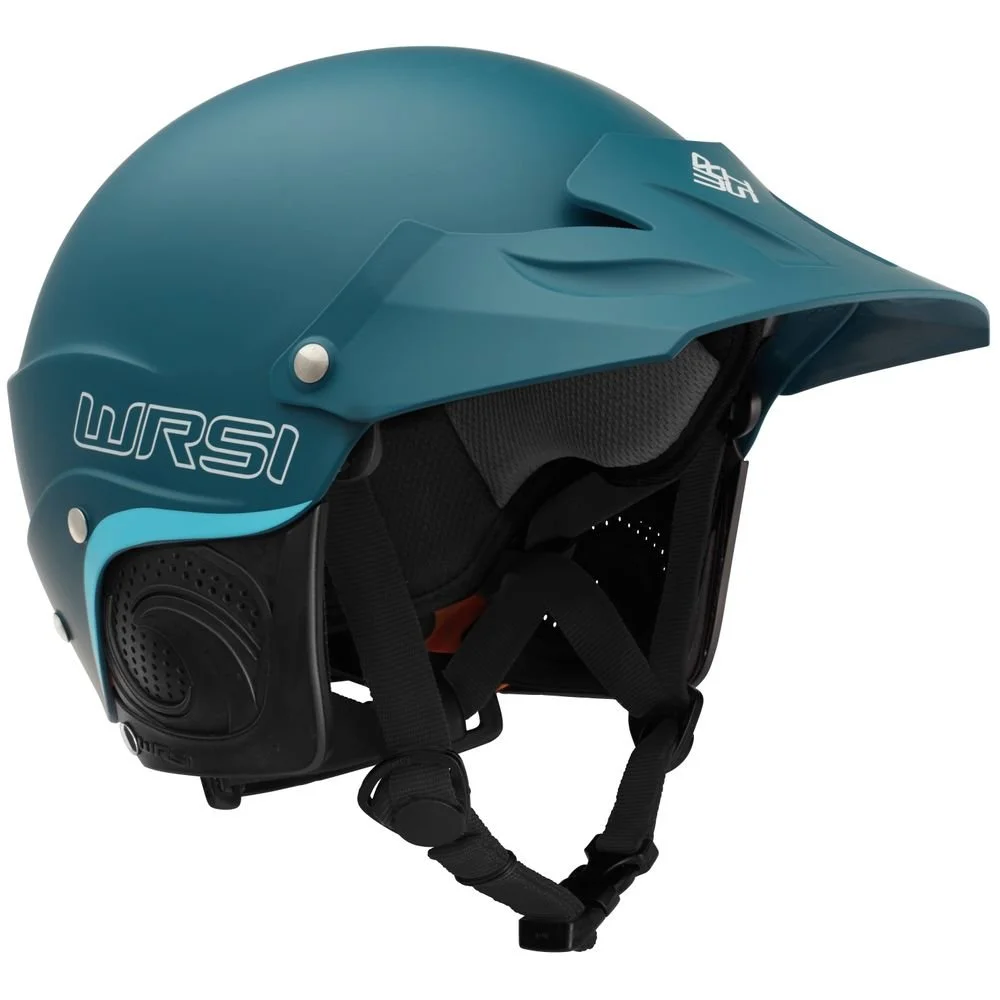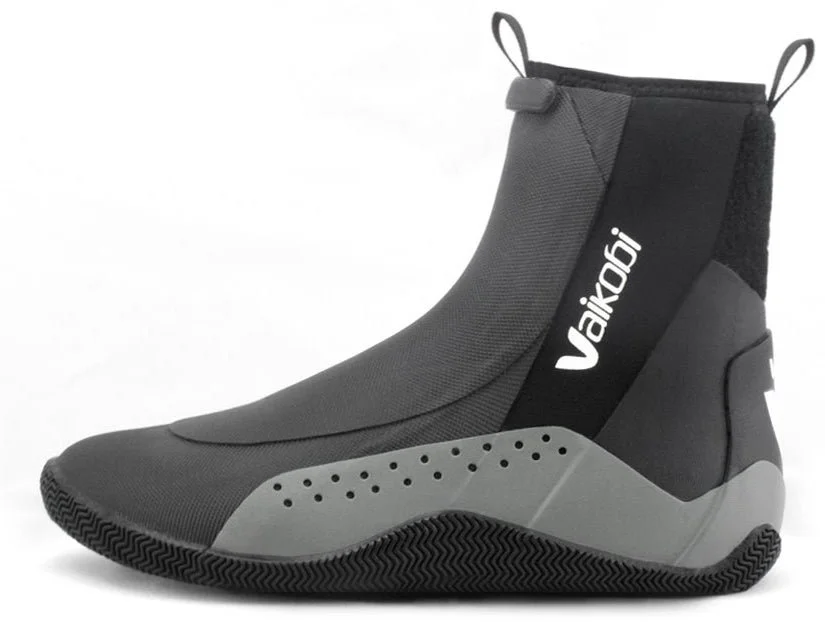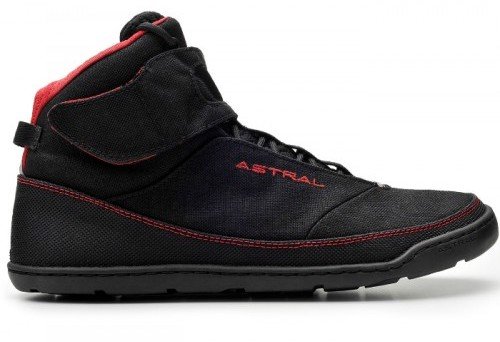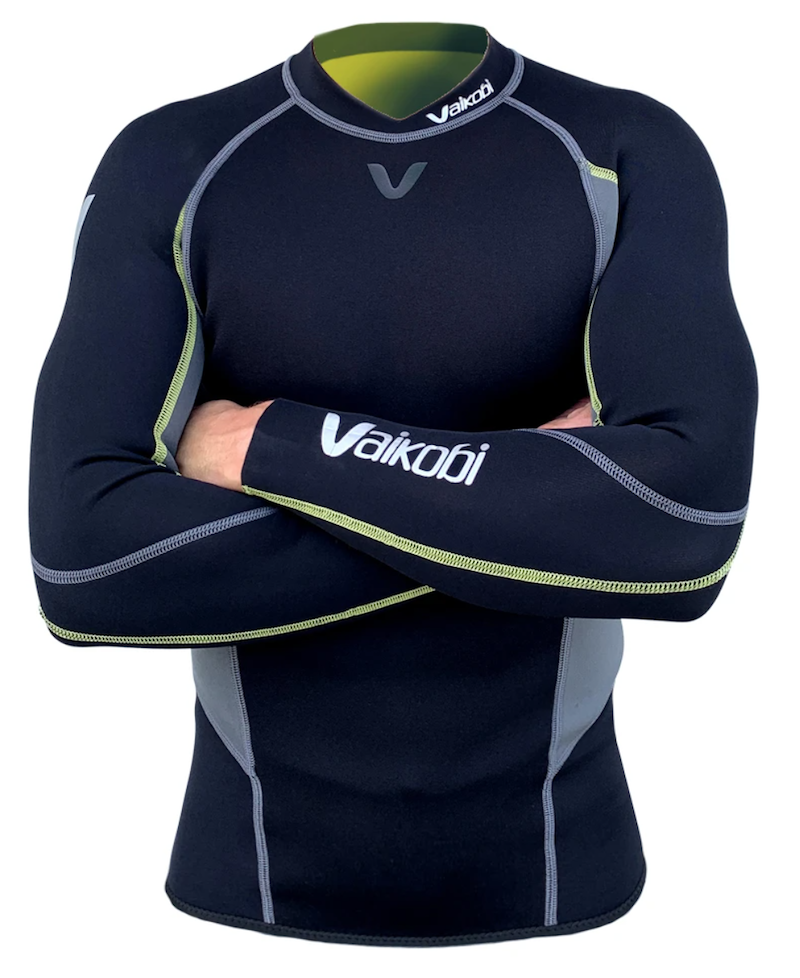Kayak Clothing
Clothing is a key consideration when going paddling, you must get this right in order to enjoy kayaking safely and make the most of your day paddle.
“It's better to be hot and bothered than cold and emotional” - You can always cool down, but you can't always warm up!
The clothing Golden Rules
Your kayak clothing should:
Have NO COTTON - when it gets wet, it does not dry and remains cold and heavy! “Cold Cotton Kills!” NOT EVEN JOCKS or socks!
When wet it must stay warm AND dry quickly!
Blocks wind, sun, rain and sea spray!
Protect from the unforgiving marine environment, such as rocks, barnacles and oysters, plus sand flies and mosquitoes that are found in the most beautiful kayaking locations!
Be high visibility and reflective - you want to be seen by other water users day and night!
Understanding the Coolgardie Safe effect is key.
Wet clothing + wind = cold… this can make you cold in warmer weather also.
No clothing is intended to be for immersion in the water.
Clothing is a very important aspect of kayak safety and is discussed in our kayak courses. Also see the video below:
For more information:
Base and Thermal Layers
Sun Smart and Quick Dry Clothing
Cags, Paddling Jackets and Dry Pants
Wetsuits
Drysuits
Head Wear
Gloves
Foot Wear
Base and Thermal Layers
In all colder water locations (for example: Victoria, South Australia), we recommend wearing a thermal top on all days except the hottest ones.
Our recommendation for most of the year is the Adrenaline 2P Thermal Long Sleeve Rash Top.
It is a medium weight thermal top which stays warm when wet, dries quickly and is yellow - our favourite colour as it is highly visible.
In winter, fleece material is the key. It is the warmest material when wet and dries out really quickly. Our recommendation for fleece is the Sherpa Outdoors Lightweight Fleece. Our instructors generally carry three and depending on the environment they may be worn under a paddling jacket/cag.
We don’t recommend tops that are tight fitting. A looser fit is the key to comfort, it allows for good torso rotation and reduces armpit rubbing on long haul paddles. Nylon Rashies are also not recommended, they are almost as chilling as cotton when wet.
Pants
Long pants serve the dual purpose of keeping legs warm (if they do not get wet - otherwise you wear an outer layer/ overpants) and most importantly they keep the sun and bugs off - particularly when in an open canoe, sit-on-top or fishing kayak. In a sea kayak the lower legs are protected from the sun by a spraydeck or at least partly by being in an enclosed cockpit, so you can get away wearing board shorts or paddling shorts in warmer weather.
We recommend that thermal pants are worn tight fitting, so if they become waterlogged they do not slip down as badly as they would if they were looser fitting, so when walking in water they do not flap around.
Something to watch is that, for people whom paddle enclosed sea kayaks, your kayak is part of you clothing (blocks the windchill/ Coolgardie Fridge affect) when you are sitting in it, and when you get out the wind blows thought you pants - Coolga, if you do not have any dry paddling pants of overpants to cut the wind. So mainly I wear long pants to keep the sandflies off!!!! But sometimes I get cold legs!!
Paddling shorts are available in different fabrics - choose between a medium thermal material (Adrenalin 2P Shorts), thin flexible neoprene (Adrenalin 3mm Neoprene Shorts ) or lycra UV paddling (Vaikobi UV Paddle Shorts). Both thermals and neoprene will keep you warm when wet and dry quickly so it is a personal choice which fabric you prefer - both are very popular.
Long pants are essential for prolonged sun exposure and for cold and windy environments. For hot weather choose Sunsmart cargo pants. When the weather is cool and/or windy we recommend thermal pants - Adrenalin 2P Thermal Long Pants, Enth Degree Aveiro Long Pants or Vaikobi VCold Flex Paddling Pants. For added warmth in wet environments add a pair of dry pants over the thermals.
Thermal pants can be rather form-fitting! Some guys (& girls) like to wear their boardies over the top. We do recommend ditching the undies (no cotton!) and speedos - these can draw the warmth away from your body so that even if you are wearing thermals you are experiencing a cold bottom! Also compression pants are usually not thermals - unless they have a fleecy lining, so these are not recommended for paddling either - they are designed for compression during recovery, not watersports.
Cags, Paddling Jackets and Dry Pants
Your outerwear is important to prevent windchill (Coolgardie Fridge effect) - where your clothing is wet and the wind further chills you down. You should be wearing a thermal base layer that stays warm when wet and dries quickly (never cotton!). On windy and cold days you will need an outer layer that keeps the wind out and your body warmth in. Even on warm days we carry a paddling jacket (cag) in an accessible part of the kayak (day hatch or behind the seat) in case conditions change - you can still get cold in windy conditions on a warm day.
Dry pants are a great addition to your paddling kit on sea kayak trips where being wet all the time would be a real drag! South West Tassie wilderness was one such place - having dry feet and legs really enhanced the enjoyment of the scenery! Even though it was summer it was still coolant wet. Dry pants are also great when kayak fishing - they keep off the sun and keep you warm while waiting for that big one to bite!
What to look for in outerwear:
Breathable fabrics, water resistant and quick drying
Hood, with brim - to keep off the rain and protect the back of the neck in the cold and wet conditions - you are really well protected when paddling downwind. Note that hoods can act as a sea anchor and fill up in the case of capsize.
High visibility colours and reflective patches
Pockets in useful places
Neck and wrist seals - how well they hold water in or out
Interconnectedness with spraydeck collars and paddling pants
Head Wear
Effective headwear goes a long way towards maximising your comfort out on the water. The combination of sunglasses, cap/hat and Buff protects from the Sun and also keeps the head warm in cool and windy weather.
In moving water rives, around rocks and in surf, safety is paramount and a suitable helmet is a must!
Sun Protection - Buff, Hats and Caps
For sun protection we prefer either:
a cap and Buff combination - the Buff can be pulled up to protect the ears and lips
a broad-brim hat with a stiffened brim such as the Vaikobi Down Wind Surf Hat. Soft brims can lift up in the wind, exposing the face. Even with models that have a stiffened brim, sunlight and UV reflect off the water and you can still get burnt! Covering up completely by adding a Buff is really effective! Botox is too expensive!
Sun Protection Australia Adapt-a-caps are an all-in-one alternative to the Buff and Cap combo if you find a Buff over your lower face a bit constrictive. The drawstring can loosen off if you want to wear it lower or looser.
Hats and Caps also serve a dual purpose - most of the time your head is the highest visible point on the water so a highly visible colour hat/cap is a good idea to help keep the group together in on the water, particularly if conditions are rough or visibility poor.
Helmets
Helmets are strongly recommended for use in surf, around rocks and in moving water (rivers).
Even if the water is deeper in the surf zone, a capsize may result in you emerging on the wrong (shoreward) side of your kayak and being whacked in the head as the next wave comes through!
Your helmet should fit without being able to be wobbled side to side. There should be sufficient padding for a comfortable fit, with adjustable harness.
Helmets with side protection (“Full cut”) are generally used in white water, as are full-face helmets for serious water, such as the WRSI Moment.
RUK Sport Rapid Canoe & Kayak Helmet - Half Cut
RUK Sport Rapid Canoe & Kayak Helmet - Full Cut
WRSI Current Helmet
WRSI Current Pro Helmet
WRSI Trident Helmet
WRSI Moment Helmet
WRSI Current Pro Helmet
Sunglasses and retainers
Sunglasses provide protection for your eyes from the UV light and help cut the glare. Polarised sunglasses such as the Vaikobi range, allow you to see detail below the water’s surface but may make it difficult to see screens, such as GPS, fish finders or even phones. The Barz Optics Reader range (Nauru & Tofino) have a non-polarised lens insert with an optical correction (+1.50. +2.00, +2.50 correction) to enable those of us who now need help with our close-up vision to more easily read maps & devices.
Don’t lose you sunglasses overboard! Secure them with a retainer so they don’t depart for Davey Jones’ Locker!
Barz Optics Nauru Reader Polarised Sunglasses
Barz Optics Tofino Reader Polarised Sunglasses
Vaikobi Molokai Polarised Sunglasses - Brown/Amber & Black/Smoke
Vaikobi Sorrento Polarised Sunglasses - Grey with Orange Tint & Black with Blue Tint
Vaikobi Vienta Polarised Sunglasses - Brown/Amber & Black/Smoke
Barz Optics Floating Sunglass Retainer
Gill Floatable Sunglass Retainer
Gloves
An important, but sometimes overlooked, item of clothing, gloves protect from the sun, cold, wind, blisters and the sometimes sharp marine environment. I fell over and sliced my hand over on a barnacle early in a trip in the Inside Passage...
My general go to is a Fingerless Glove: in cooler water the NRS Guide Gloves. Up in the warmer waters you can utilise the Sea to Summit Solution Gear Eclipse Gloves with Velcro Cuff, this lycra glove can be a little cold in the colder water with a little wind - the Coolgardie Fridge effect happening.
Fingerless Gloves (Half-finger Gloves)
Year round, sun gloves with UPF 50+ rating provide protection against UV damage, with the added bonus of helping to protect your hands not just from rubbing and blistering but also from barnacles and oyster shells - a slip or trip that might otherwise be a trip-ender! As sun-gloves we recommend Sea To Summit Eclipse Gloves, NRS Skelton Gloves and Kokatat Lightweight Gloves. The Skelton Gloves are slightly longer in the wrist and give a good covering (mind the gap!). The Kokatat gloves are made of durable and hardwearing fabric.
When the environment is colder, you may want gloves with more warmth insulating properties. Neoprene gloves are one option - make sure the material across your palm is not too thick - so you can still find your holy-moly-crap strap in the event of a wet exit! Also you do not want to increase the diameter of your grip - this will stress your forearms (so don’t use your gel-filled cycling gloves). Alternatively you can use paddling mitts, or pogies, that velcro to your paddle shaft and you can slide your hands in and out. The NRS Guide Gloves are a great option for cooler weather - neoprene keeps your hands warm but they are also fingerless to maintain dexterity.
Sea To Summit Eclipse Gloves
NRS Skelton Gloves
NRS Guide Gloves
Kokatat Lightweight Gloves
Pogies
Pogies are under-utilised in Australia. Our clients are slowly catching on. Pogies are a type of paddling mitt that attaches to the paddle shaft - they velcro (hook & loop closure) over the paddle shaft with an opening to slide your hand in. You then grip the paddle shaft normally, but with the pogie encasing your hand. The Vaikobi pogies are the exception as they slide over the paddle shafts of 2-piece paddles - no velcro. They fit firmly to the paddle shaft but cannot be used with one-piece paddles.
This has the benefit that your fingers together are collectively warmer than in a glove alone and you can slide your hand out of the pogie for any task that requires manual dexterity. For protection from wind chill they are the best!
The downside is that they are more open and tend to scoop up water. Also they are obviously not being worn when off water - if you are portaging or spending time on the beach you will need to consider additional warming hand wear. The solution may just be gloves with pogies!
I rarely walk out and not carry pogies in the colder environments. After sitting with young clients in front of Meers tidewater glacier after 5 minutes of admiring the most amazing spectacle I had seen from a kayak, their hands got cold and we had to move on… the next year we all had pogies and we were able to sit and enjoy for a good hour!
For sea kayaking touring you want easy access in and out of you Pogies, White water: the question is do you want water to flow in and out or easy access (how tight in the wrist).
Materials used for pogies vary: Mambas & Electric Water are neoprene, Sharkskin Chillproof and Vaikobi are fabric with fleece lining, Peak UK are nylon with velcro closure and Kokatat are Tropos fabric. The Kokatat pogies are the longest down the wrist.
Kokatat Tropos Kayak Mitts
Vaikobi Pogies
Sharkskin Chillproof Pogie Gloves
Peak UK Pogies
Electric Water Neoprene Pogies
NRS Mambas
Full-finger Neoprene Gloves
Not a really fan, but everyone has different views. I would prefer a combo of fingerless gloves and pogies before going full-fingers, for operating tech - you do lose a lot of gloves if you have to take them on and off.
When the water is cold you need more than a sun glove. Neoprene has great insulating properties and will keep your wet hands warm. For paddling it is important to retain good feeling and dexterity in your hands - in the event of a capsize you must be able to feel and manipulate your holy-moly-crap strap if you are wet exiting.
Full-finger gloves should have a warm insulating neoprene back and soft, flexible abrasion-resistant palm and fingertip area for greater dexterity and feeling, while also protecting the hands from blistering and sharp encounters in the marine environment!
The next most important feature of a glove is the fit - make sure you get the size to fit you not 'one-size-fits-most' or you will get cold water flush from loose poorly fitting gloves. These gloves come in a range of sizes from XS to XXL and the Reef Pro Gloves also have a velcro wrist strap to cinch the glove closed at the wrist.
Ocean Pro Reef Pro Gloves
NRS Fuse Gloves
Kokatat Neo Kozee Gloves
These are great gloves for cold water paddling, also for diving, snorkelling and ocean swimming.
Foot Wear
Footwear is vital - you should have a decent sole on your paddling footwear to protect yourself from sharp objects in the marine environment - rocks, barnacles, oyster shells, broken glass and all manner of other nasties hiding in the mud. Paddling socks - whether neoprene or thermal are also necessities - they will keep your wet feet warm and cover the gap between booties and long pants that gets munched by insects when you are off the water!
WET Shoes / Booties
The sole of your wetshoes / booties should still be flexible enough so that you can maintain good feeling of your foot pegs, and if your feet are larger, not be too cramped in the end of the cockpit. Your paddling shoes should also be well attached to your feet so they don't float away if you take a swim or get sucked off in the mud in those low-tide landings - a velcro strap to tighten or an above the ankle opening help keep them on.
We have found a good lightweight minimalist runner to be good for kayaking, and there are a variety of water shoes on the market - choose something sturdy! Three brands that combine sturdy construction and grippy soles are: NRS, Vaikobi and Astral Designs.
NRS Kicker booties are a low ankle wetshoe and NRS Freestyle Wetshoe are booties that extend further up above the ankle. The Kicker has a thicker sole - more protective, while the thinner Freestyle sole allows for greater feeling of the foot pedals.
Vaikobi also have sturdy neoprene wetshoes - both low rise (Vaikobi Speed Grip Low Cut Boot) and high cut above the ankle (Vaikobi Speed Grip Low High Cut Boot). These are both stiffer wetshoes with fairly thick soles to protect against sharp objects underfoot.
For a non-neoprene option, Astral Designs also have excellent low and high water shoes, made from hydrophobic canvas, which is relatively quick drying. Astral Designs Loyaks are the low wetshoe and Hiyaks are an above-ankle boot - great for keeping the sand out. Both have good grippy soles to avoid slipping on rocks. They have shoelace closure, but with the Hiyaks there is a flap over the laces to keep them secure. We use and recommend these water shoes / boots.
All these wet shoes and low boots are suitable for sea and river kayaking. Note that these are not waterproof fabrics and in any case water can go over the top. For extreme conditions the NRS Boundary Boots are a high boot, just below the knee, made of warm 5mm neoprene (uppers) with a thick sole and are factory tested for water-proofness.
NRS Kicker Booties
NRS Freestyle wetshoe
NRS Boundary Boots
Astral Designs Loyaks
Astral Designs Hiyaks
Vaikobi Speed Grip Low Cut Boots
Vaikobi Speed Grip Low High Cut Boots
Thermal, Neoprene and Waterproof Socks
An important part of your base layer is keeping your feet warm - unless you are wearing a drysuit/drypants or a high waterproof boot (mukluks or NRS Boundary Boots), inevitably you will get wet feet, so you need to be able to keep them warm when wet. Wearing socks also protects that gap between long pants and booties from biting insects that seem to sneak up on you when you are busy at lunchtime and when setting up camp.
The choice comes down to thermal/fleece socks or neoprene socks. The 2mm or 3mm neoprene socks (Adrenalin and Vaikobi) are possibly a bit warmer but it is a personal choice and what you find most comfortable.
With fleecy / Polytherm socks, obviously the thicker the material is the warmer the socks - Sharkskin Chillproof Socks (regular or Titanium / T2) are the winners here.
Waterproof socks are a new product where a knitted sock (SealSkinz Waterproof Knee Length Socks) have a waterproof membrane within the fabric or waterproofed neoprene with taped seams and a high sealed cuff (NRS Boundary Socks). There is also the Kokatat Launch Socks that are Hydrus fabric, that are high calf-length oversock (wear warm socks inside and shoes over) that acts like the lower part of dry pants and has a draw string closure - keeps you dry when wading and has no neoprene.
All socks are intended to wear inside shoes, otherwise they will quickly wear through when walking around. With thicker socks you may find you need a larger size shoe than you would normally use.
Adrenalin 3mm Neoprene Dive Socks
Ocean Hunter Fin Socks 3mm Neoprene (intended for use under dive flippers)
Vaikobi 2mm Neoprene Socks
Sharkskin Chillproof Socks
Sharkskin Chillproof Titanium Socks
Sharkskin Chillproof Titanium T2 Socks (new version replacing original Titanium)
NRS Boundary Socks
SealSkinz Waterproof Knee Length Socks
Kokatat Launch Socks
Wetsuits
We seldom paddle distance in a wet suit - they are not the most comfortable garment compared to a good set of thermals and paddling jacket (or dry suit if it is really cold!), but a wet suit has its place when training or spending a lot of time paddling and playing in surf.
Most paddling clothing is designed for you to not spend much time immersed. Dry suits are designed for this but they are a major investment and are more suited to paddling in places like Tasmania, New Zealand and northern parts of North America or Europe, where you will get your money's worth. If you are learning to roll or other forms of self rescue, or like to play in surf, a wet suit is a much more affordable investment.
Ideally, for paddling you want one that will allow maximum arm movement - the sleeveless or "Farmer John" style (Adrenalin 3/2mm Long John Wetsuit). These are available with a mixture of 2mm and 3mm thick neoprene - greater thickness to keep your core warm and retain flexibility for your legs. Wear it with thermals or fleece under the top, wetsuit socks (and shoes) and a paddling jacket to keep off the windchill.
Vaikobi have designed a range of wetsuit separates flexible enough to support the paddling action, appropriately named Flexforce. This super-stretchy type of neoprene is designed for paddling, to give maximum flexibility and warmth with a fleece lining and ergonomic sleeve designed for active fit. These tops are available in two thicknesses: FlexForce 1.5 and FlexForce 3.0.
Note that neoprene is not generally waterproof - it is designed to keep you warm when wet.
Adrenalin 3/2mm Neoprene Long John Wetsuit
Adrenalin 3mm Neoprene Shorts - Men's
Adrenalin 3mm Neoprene Shorts - Women's
Vaikobi FlexForce 1.5 Top
Vaikobi FlexForce 3.0 Top












